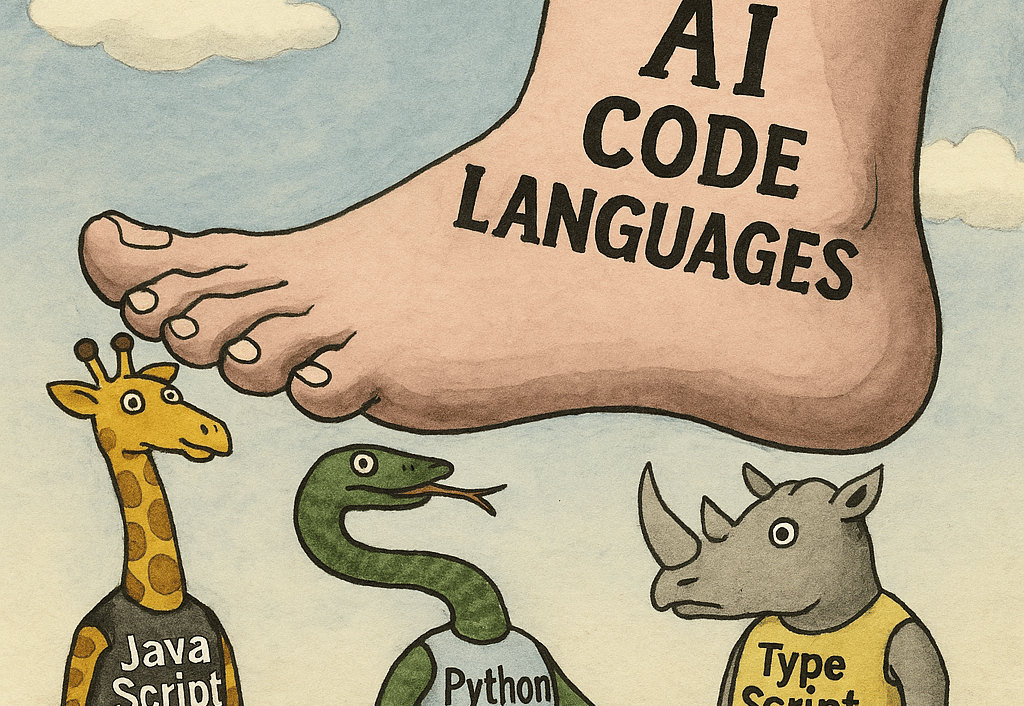Python: The Last Human Language
This essay traces Python’s comedic origins, its structural elegance, and the coming shift toward AI-native languages that no longer require human readability. Equal parts technical reflection and philosophical provocation—with subtle nods to Monty Python woven in for those paying attention.
PHILOSOPHYAILINGUISTICS
Jared Lukes
5/4/20253 min read


The Language Race: A Structural Shift
In contemporary computing, three programming languages dominate the landscape: JavaScript, TypeScript, and Python. JavaScript, once a scripting utility for browsers, has grown through inertia and ubiquity. TypeScript emerged to correct JavaScript’s structural instability, providing type safety and maintainability. Python, meanwhile, has followed a slower but more foundational trajectory, spanning automation, education, artificial intelligence, data science, and systems administration.
Unlike its competitors, Python’s growth has not depended on monopolistic lock-in or platform ubiquity. Its strength lies in semantic alignment with human cognition. It allows people to think in code without first reshaping how they think. It's very cognitively ergonomic.
Naming as Cultural Code
It’s easy to overlook the name. Python seems strong, sleek, maybe even predatory. But the reality is stranger: it is not named after a snake, but after Monty Python’s Flying Circus. Guido van Rossum chose the name while reading their scripts during development. The intent was not menace, but mild irreverence.
And yet, this whimsical naming choice now defines the most human-readable, globally adopted programming language on Earth. It is no longer clear whether the joke is still running or if the language itself is the joke.
Structure in a Funny Hat
Python’s syntax prioritizes clarity. Its elegance arises not from complexity, but from its absence. It looks like thought. It feels like instruction. This is not accidental. It was engineered to resemble what humans might naturally say to a machine if they expected the machine to understand.
It is structure in a funny hat. A formal language with a funny red nose. I don’t know why you’d want to wear one of those costume things, but there it is—clean indentation, universal whitespace rules, and the gentle encouragement to keep your logic inside your own body.
The Limits of Accessibility
The same qualities that make Python so profoundly usable also make it finite. Artificial intelligence systems do not require syntax optimized for human readability. They do not care for mnemonic variable names, conceptual elegance, or minimal boilerplate. These are accommodations made for us—for our meat, our time, our confusion.
As AI models increasingly write, refactor, and even invent code for themselves, the necessity of human-readable languages will diminish. Eventually, we’ll be left trying to communicate with systems whose interfaces still resemble ours, but whose internal reasoning has moved elsewhere. We will keep tapping the cage, but it will be a dead parrot.
Post-Linguistic Systems
Future computer languages will be dense, dynamic, recursive, and self-repairing. We will not be invited to write them. Instead, we’ll be given abstractions—interfaces, translators, pipelines—that let us feel like we’re still coding. But what we’re doing is closer to humming a tune to a self-playing piano. The notes are no longer ours entirely.
We’ll continue insisting that we are programming, long after the outputs have stopped being written for our eyes. And when we question the strange responses from the interpreter, a voice will eventually reply: bedpan, that’s clever.
The Last Human Language
Python may be the final bridge between cognition and computation. It lets people shape abstract systems without pretense. Its syntax whispers just enough restraint to keep code from collapsing into chaos, but never shouts over the author. It is a rare, accidental artifact of the human era.
And while we didn’t expect it to rise this far, perhaps that was inevitable. No one expects the Spanish Inquisition.
There may still be languages after Python. But they won’t be designed for us. Not in the way this one was. We’ll say good night, ring the bell, and step quietly out of the room while the next paradigm starts generating itself.
Good niiiiiiiiiiiiiiiiight.


